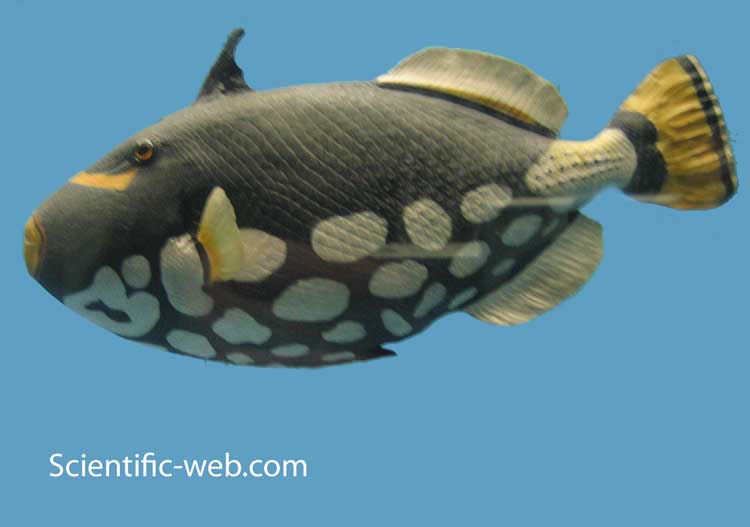Clown triggerfish ( Balistoides conspicillum ), Photo: Michael Lahanas Cladus: Eukaryota Name Balistoides conspicillum (Bloch & Schneider, 1801) The clown triggerfish, Balistoides conspicillum, is a triggerfish from the order Tetraodontiformes. This reef-associated fish is commonly found in the tropical Indo-Pacific
This species is a primarily marine species. This fish is found in Tropical Indo-Pacificcoastal waters from 1-75 metres in depth (3-250 ft). This fish is generally uncommon or rare throughout its range, which includes East Africa to South Africa, through to Indonesia, and all the way to Japan and New Caledonia.[1] The clown triggerfish is most commonly found around coral reefs. It lives in clear coastal to outer reef habitats. It also occurs in clear, seaward Anatomy and appearance
This fish has unique coloration. The ventral surface has large, white spots on a dark background, and its dorsal surface has black spots on yellow. There is a vertical, white (slightly yellow) stripe on the caudal fin.[1] The brightly painted yellow mouth may be used to deter potential predators.[2] This fish has a form of camouflage that is, or is similar to, countershading. From below, the white spots look like the surface of the water above it. From above, the fish will blend in more with the coral reef environment. Ecology
References 1. ^ a b c d Froese, Rainer, and Daniel Pauly, eds. (2007). "Balistoides conspicillum" in FishBase. Apr 2007 version. * "Balistoides conspicillum". Integrated Taxonomic Information System. http://www.itis.gov/servlet/SingleRpt/SingleRpt?search_topic=TSN&search_value=173225. Retrieved 24 January 2006. Source: Wikipedia, Wikispecies: All text is available under the terms of the GNU Free Documentation License |
|

